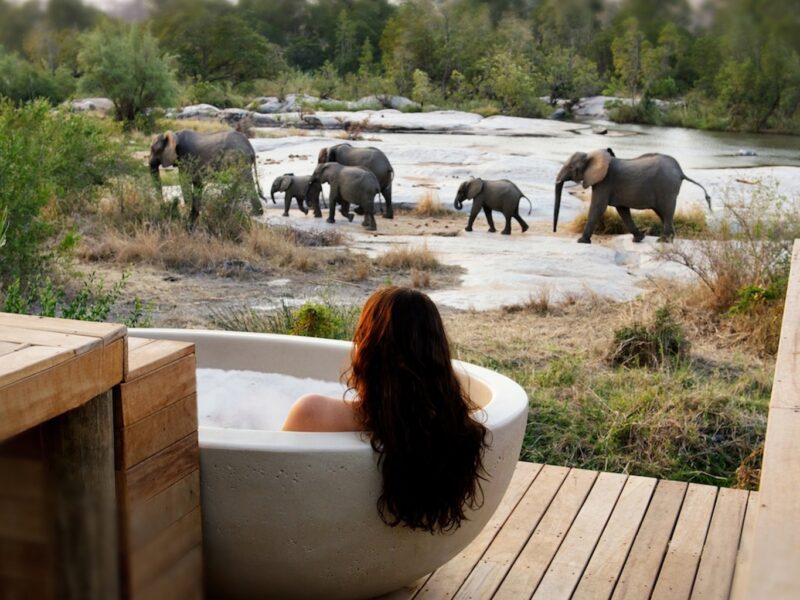A Guide to the Serengeti Great Migration in April
The Serengeti in April is not about crossing rivers or watching herds gallop across dust-dry plains. It is about quiet drama, about the rhythm of rain and movement, about watching a young calf take its first hesitant steps through wet grass.
Introduction to the Great Migration in April
April in the Serengeti offers a distinct and dramatic chapter in the story of the Great Migration. This is the heart of the long rainy season, a time when the skies are often overcast and the landscape transforms into a lush, verdant expanse. While many travelers tend to avoid this period due to the unpredictable weather, April rewards those who venture in with a quiet, deeply immersive experience of the Serengeti ecosystem. The herds of wildebeest, zebras, and gazelles are now moving slowly northwest from the southern plains, driven by the promise of fresh grazing after months of calving and feeding. The landscape is alive with new life and the lingering signs of recent births, and predators follow close behind, keen on taking advantage of any sign of weakness in the herds. April isn’t just a time of movement; it’s a time of endurance, of resilience, and of raw, untamed beauty.
Where to See the Migration in April
During April, the herds are predominantly found in the southern and central Serengeti, particularly in regions such as Moru Kopjes and the plains surrounding Seronera. These areas are rich in mineral soils that nourish the grasses and support the large concentrations of herbivores. The southern plains, which had been the scene of intense calving activity just weeks before, begin to dry out slightly in places, prompting the herds to edge northwards. However, their movement is not rapid or synchronized. Instead, it unfolds gradually as different sections of the mega-herd fan out across a wide front, grazing and regrouping as they prepare for the more rigorous stages of their journey. The central Serengeti also offers more tree cover and water sources, making it an attractive spot not only for the herbivores but also for the big cats—lion, leopard, and cheetah—who often set ambushes along the wooded edges of the plains.
The Weather and Landscape in April
The long rains in April bring a gentle rhythm to the Serengeti, with frequent showers typically falling in the afternoons and evenings. The air is thick with the scent of wet earth and blossoming acacias, while the sky frequently shifts between brooding clouds and patches of sunlight that cast golden hues on the soaked grasslands. The rains make the landscape intensely green, and flowers bloom across the plains, attracting insects and birds. Though the roads can become muddy and travel more challenging, the reward is a Serengeti that feels more primal and less touched by tourism. April’s rain doesn’t wash away the drama—it intensifies it. Thunderstorms often echo across the open plains, and the sight of wildebeest in the mist against a darkened horizon is hauntingly unforgettable.
Wildlife Encounters Beyond the Herds
Although the migration itself is the star of the show, April offers a wide range of other wildlife spectacles. Predators such as lions are highly active, their prides often visible lounging near kopjes or pacing the plains. Cheetahs are spotted on termite mounds, scanning for isolated or weakened young calves. Leopards, more elusive, lurk in the trees of the central woodlands, sometimes descending to stake out warthogs or impala. Hyenas are ever present, their laughter piercing the stillness of the damp mornings. April is also a phenomenal month for birdwatching. Migratory species are still present, and the rains draw out colorful species like the lilac-breasted roller, saddle-billed stork, and various kingfishers and bee-eaters. Crocodiles and hippos thrive in the swollen rivers and pools, occasionally causing a stir when the herds try to cross muddy streams. The bush is alive with the constant interplay of predator and prey, offering intimate scenes of survival.
Why April Is a Hidden Gem for Safari Travelers
Traveling to the Serengeti in April offers a different kind of magic compared to the peak migration months. The parks are quieter, lodges are more intimate, and the atmosphere is one of solitude and authenticity. Fewer vehicles mean more personal experiences at sightings and longer periods to observe animal behavior undisturbed. The soft light and dramatic skies create ideal conditions for photography, capturing everything from stormy horizons to rain-slicked lions with glistening coats. For seasoned safari-goers or those seeking a more exclusive experience, April delivers a raw and untamed Serengeti that feels like your own private wilderness. It is also a more budget-friendly month, with lower rates at many camps and lodges, allowing for extended stays or upgraded accommodations that might be cost-prohibitive during the dry season.
Travel Tips for Experiencing the Migration in April
Due to the seasonal rains, it’s essential to be prepared for wet and muddy conditions. Travelers should pack waterproof clothing, quick-drying layers, and sturdy boots. A good pair of binoculars and a rainproof camera bag are invaluable for capturing the nuances of the migration in motion. When selecting accommodation, opt for lodges or mobile camps located near the Moru Kopjes or Seronera regions, as these provide excellent access to the central herds and the surrounding predator-rich territories. It’s also wise to work with experienced guides who are familiar with seasonal shifts and able to interpret subtle movements in the herds. Despite the weather, daily game drives remain exciting and rewarding, often filled with surprise sightings and moments of intense beauty. This is a month for travelers with a spirit of adventure, ready to embrace nature in its truest, wildest form.




